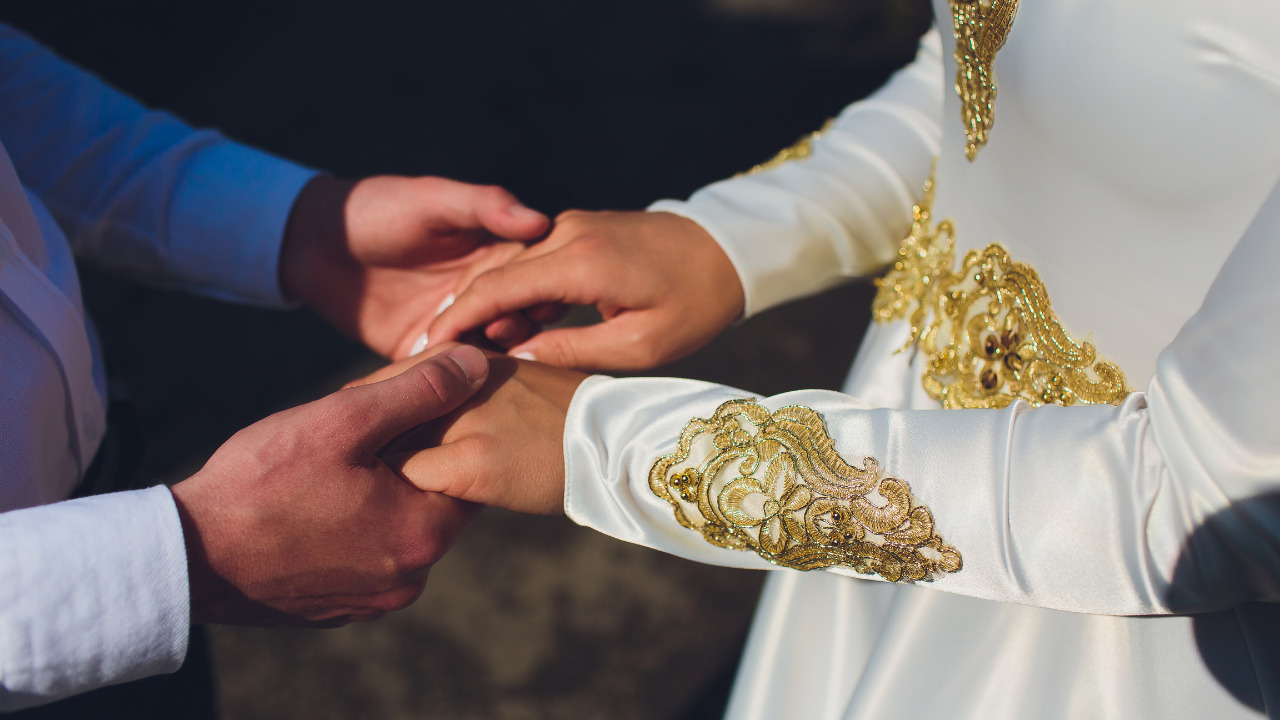Few questions can change your life like, “Will you marry me?” It leads to harmless dilemmas like choosing between an extravagant affair or intimate event with your closest family and friends along with fun decisions such as hiring a live band or DJ, and selecting formal or casual attire. Yet none of these seem to compare with the ultimate question of whether you should change your name, which is a big decision for any couple, but in some ways even more complicated for same-sex couples getting married. Although making the right choice may seem difficult, completing the name change process is a breeze with shortcuts like
HitchSwitch, which allows you to complete the process in two easy steps. First, a few things to consider about changing your name if you’re in a same-sex relationship.
What Most Gay Couples Are Doing
Name Change Options for Same-Sex Marriages
Same-Sex Name Change Checklist
Gay Marriage Name Change History
What Most Gay Couples Are Doing
Your name is more than a label your parents gave you—it’s part of your identity. It tells the world who you are and where you come from. This is why same-sex marriage name changes can be complicated for many couples. You have to weigh the cultural considerations and convenience of keeping your own names with that feeling of belonging you may find by sharing a family name and choosing the option that works best for you and your partner.
For some professionals—a writer, lawyer or entertainer—changing their name could have a negative impact on their career. For them, changing a last name requires more than updating business cards. It means reaching out to clients and fans to let them know about a new last name. Some people take great pride in their ancestry and feel that their last name keeps them connected to the family history they may want to pass on to their children. Furthermore, the name change process takes time, and some same-sex couples decide that sharing the same last name is not worth the hassle of gathering documents, filling out forms and calling creditors—not to mention creating a new email address or online handle.
On the other hand, some couples feel that sharing a last name is a public declaration of their commitment to each other and their families. According to The Knot 2015 Real Weddings Study, in 2015, 38 percent of male couples and 71 percent of female couples changed their last names. In 2016, those numbers have increased to 61 percent of male couples and 77 percent of female couples who’ve decided to change their last names. You may choose to either follow the tradition of selecting one spouse’s name or you may want to create a modified surname for the family. This is especially true if you and your partner plan to have children and want each member of the family to have the same last name. There are emotional and practical reasons for making this choice. Ultimately, the decision is personal and should be made based on what feels right for your
family situation.
Name Change Options for Same-Sex Marriages
Steven Petrow of
GayManners.com, a respected expert in the field of gay etiquette and author of several books on the subject, acknowledges that the tradition among gay and lesbian couples is to retain their own names after marriage, but some prefer the public expression of devotion and unity that sharing a last name gives them, whether that means hyphenating their last names, taking their spouse’s last name or creating a new last name altogether. For newlywed couple Melinda and Patricia McCallinhart, from Columbus, Ohio, their decision to combine their last names to create a new last name made the most sense for them personally. “We wanted something that would sound natural, and it was important to us that we didn’t hyphenate our names,” says Melinda of their choice. “We wanted to be unified as a family and we wanted it to represent both of us. A new name is about a new future together. We love our new last name. It’s a reminder that we share everything now—a house, finances, our cats, our dreams—all aspects of our lives.”
When deciding which route to take, you must weigh the benefits and disadvantages of each option and select what works best for your family. These options include:
1. Not Changing the Name: Skipping the post-nuptial name change is still a popular choice for many same-sex couples.
- Pros: This eliminates the need to update documents or acclimate to a new name. It also establishes spouses as equal individuals.
- Cons: If you choose this option, you must select which spouse’s name to give your children. You may even decide to alternate last names. For example, the first child gets one parent’s last name, while the second child shares the other parent’s last name.
2. Hyphenate Both Names: A hyphenated last name is an egalitarian choice for same-sex couples who want to share a last name while retaining their family surnames. With this option, each spouse goes through the name change process.
- Pros: The hyphenated surname lets you share your family name with your spouse and is a popular option for couples who want their children to have both last names.
- Cons: A hyphenated last name is sometimes long, and people tend to drop the second last name when space is an issue. This typically gives the first last name precedence over the second one.
3. Taking the Spouse’s Name: In some cases, one spouse chooses to take the other spouse’s name. This is common when that spouse has a name that is more recognizable or easier to pronounce.
- Pros: Taking one last name is often a good choice for kids, especially when the single last name is shorter than a hyphenated one. This is also a well-established choice for married couples, so financial institutions and government agencies have a clearly defined process.
- Cons: One spouse has to go through the name change process, while the other doesn’t.
4. Create a New Name: Some couples decide that both partners will give up their names and take a completely new one. You may create an entirely new name that combines elements of your original names or select one that represents the new family.
- Pros: By creating a new name, you establish a new tradition for the family and each partner is treated equally. Both you and your spouse will have to update all of your documents and accounts.
- Cons: This option requires more legal work, as you will have to request the name change through the court system. You may have to hire an attorney to complete the process. It also may offend family members who view the new name as an abandonment of the original family.
Same-Sex Name Change Checklist
Newlyweds ready to take the plunge into a new identity need to update their identification, financial and legal documents. You can complete each individual step yourself, or simplify the name change process with the services of
HitchSwitch. Just choose one of the convenient packages, submit the necessary information and receive a fully usable name change packet with state-specific instructions for completing the switch. The manual process for same-sex name change is ultimately the same as for a traditional couple. If you prefer to complete the entire process yourself, follow these steps:
1. Get a copy of your marriage certificate.
If you want to change your name, you can start the process as soon as you have the original or certified copies of your marriage certificate. This document serves as the legal basis for the name change, and each organization and company needs to see it in order to update your information.
2. Get a new Social Security card.
Complete the Application for a Social Security Card form available for print through the Social Security Administration’s
website or a local office. If you want to brave the lines, take the form along with your official state identification and original marriage certificate to your local Social Security office. If you’re willing to part with your documents for more than a week, mail everything to the agency. The agency will return the original documents to you, and you should receive your new card within 10 business days of the agency processing the application.
3. Change your license or state identification card.
After you receive your new Social Security card, get a new license or state identification card. Call your local Department of Motor Vehicles or visit the DMV’s
website for a list of documentation they need to see. In most states this includes your new Social Security card and a certified copy of your marriage certificate.
4. Update your bank accounts.
Head over to your bank with your new license and marriage certificate to change your name on your accounts. While there, you can also order new checks and debit and credits cards with your new name. Be mindful that there may be a fee for replacement cards.
5. Change your name on the rest of your accounts.
Create a list of the other places that need to know your new name. Call them to verify whether you can complete the name change over the phone or need to send them copies of your documentation. Such places may include:
- Employers
- Utility companies
- Post office
- Credit card companies
- Schools and alumni associations
- Mortgage company or landlord
- Insurance companies (auto, home, life)
- Doctors
- Voter registration office
- Investment account providers
- Attorney
- Passport office
Gay Marriage Name Change History
The discussion of gay marriage name change would not be possible without the perseverance of people willing to challenge the definition of marriage and the law of the land. Baker v. Nelson (1971), Jones v. Hallahan (1973) and Singer v. Hara (1974) brought up the question of whether denying same-sex couples the right to marry violated due process and equal rights. Baker v. State (1999) resulted in Vermont’s civil union law, which extended the benefits of marriage to gay and lesbian couples. Massachusetts, California, Connecticut and Iowa followed suit by formally legalizing same-sex marriage.
United States v. Windsor (2013) ended the federal definition of marriage as a union between a man and a woman and extended federal benefits to same-sex couples married in every state recognizing their marriages. That same year, the US Department of Treasury decided to give lesbian and gay couples the same tax benefits enjoyed by opposite-sex couples. Finally, Obergefell v. Hodges (2015) legalized same-sex marriages throughout the United States and brought to the forefront the question of how spouses define themselves as individuals and married couples.
With so many walls and barriers broken down, The Supreme Court’s June 2015
ruling on same-sex marriage being a right nationwide concluded an epic battle for equality and acceptance.



